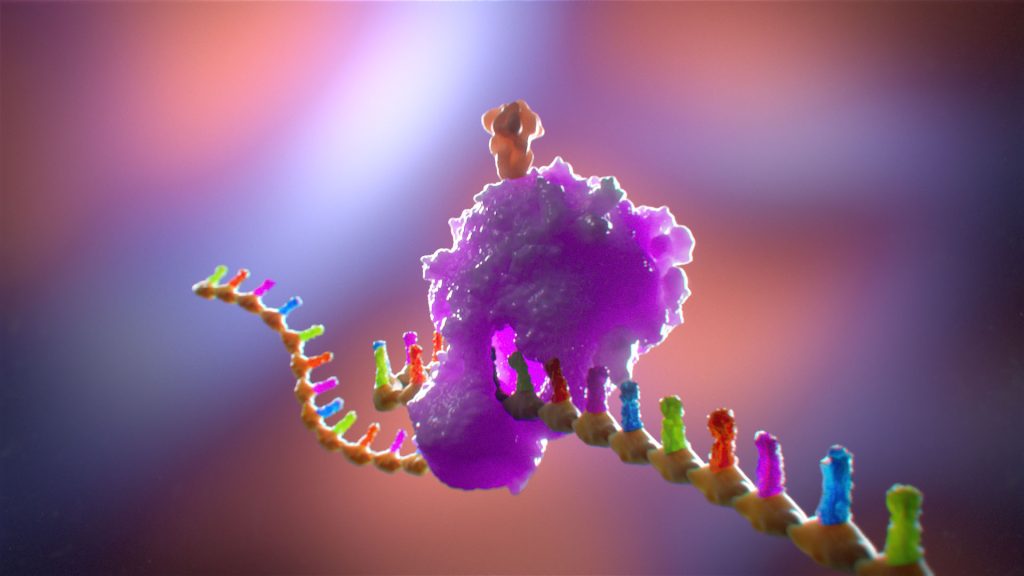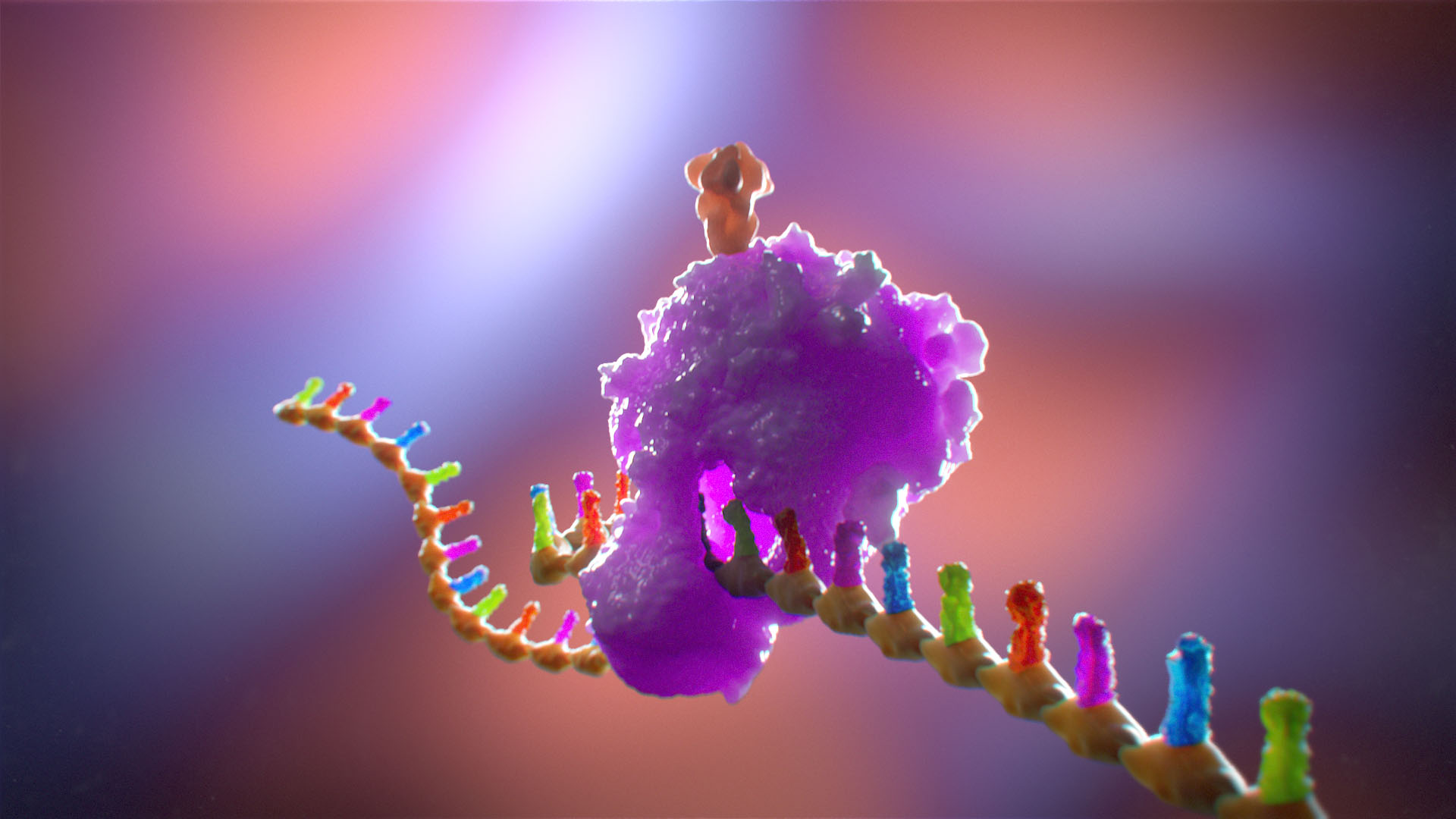
Description
The visually appealing medical illustration above, by Ghost Medical, Showcases an artistic representation of an mRNA strand inside a cell, with ribosomes translating the mRNA and assembling spike proteins on the cell surface.
In the race against COVID-19, scientists have developed groundbreaking mRNA vaccines that have revolutionized the field of immunization. These vaccines harness the power of mRNA to instruct our cells to produce harmless spike proteins, leading to a robust immune response.
Understanding mRNA and Spike Proteins

To comprehend the mechanism of mRNA vaccines, we must first understand the two key players involved: mRNA and spike proteins. mRNA, short for messenger RNA, serves as a messenger carrying genetic instructions from the DNA in our cells’ nucleus to the ribosomes—the cellular factories responsible for protein synthesis.
The SARS-CoV-2 virus, which causes COVID-19, possesses spike proteins on its surface. These spikes play a critical role in allowing the virus to enter human cells and initiate infection. By targeting these spike proteins, mRNA vaccines aim to train our immune system to recognize and neutralize the virus.
Step 1: Administering the mRNA Vaccine
When you receive a COVID mRNA vaccine, such as the Pfizer-BioNTech or Moderna vaccine, the mRNA is injected into your body. This mRNA carries the genetic instructions necessary for your cells to produce spike proteins.

Step 2: Cellular Uptake and Translation
Once inside your body, the mRNA molecules are taken up by cells near the injection site. These cells can be muscle cells, immune cells, or other cell types capable of processing mRNA. The illustration shows an mRNA strand being transported into a cell.
Inside the cell, the mRNA acts as a blueprint for protein synthesis. Ribosomes, the cellular machinery responsible for translating genetic code into proteins, read the instructions encoded in the mRNA strand. The ribosomes “read” the mRNA and begin assembling spike proteins based on the provided instructions.
Step 3: Spike Protein Production
As the ribosomes translate the mRNA, they synthesize spike proteins following the sequence specified by the mRNA strand. The illustration highlights ribosomes actively producing spike proteins, which are depicted as protrusions on the cell surface.
Step 4: Displaying Spike Proteins
Once produced, the spike proteins are displayed on the surface of the cells that manufactured them. Importantly, these spike proteins are harmless and lack the other components of the SARS-CoV-2 virus necessary for infection. The illustration vividly portrays the spike proteins being exhibited on the cell surface.
Step 5: Immune Response
The immune system swiftly recognizes these displayed spike proteins as foreign invaders and mounts an immune response. Specialized immune cells, such as B cells and T cells, detect the spike proteins and mark them for destruction. Antibodies, produced by B cells, bind to the spike proteins, neutralizing their ability to infect cells.
This immune response serves a dual purpose, it protects against the spike proteins produced by the vaccine and primes the immune system to respond effectively if exposed to the actual SARS-CoV-2 virus in the future. The medical illustration showcases immune cells interacting with the spike proteins, signifying the immune response in action.

Conclusion
The mRNA vaccines against COVID-19 have introduced a new era of vaccine technology, utilizing the body’s own cellular machinery to fight the virus. Through an elegant process, the mRNA strand from these vaccines instructs our cells to produce harmless spike proteins, triggering a robust immune response. The medical illustration provides a visual representation of this intricate process, emphasizing the crucial role of mRNA and the subsequent production of spike proteins.
As we continue to combat the COVID-19 pandemic, mRNA vaccines have emerged as a beacon of hope, demonstrating the incredible potential of scientific innovation. By understanding the mechanism behind these vaccines, we can appreciate the remarkable science and collaborative efforts that are helping us navigate these challenging times.
References:
- Kaur SP, Gupta V. COVID-19 Vaccine: A comprehensive status report. Virus Res. 2020 Oct 15;288:198114.
- Polack FP, et al. Safety and Efficacy of the BNT162b2 mRNA Covid-19 Vaccine. N Engl J Med. 2020 Dec 31;383(27):2603-2615.
- Baden LR, et al. Efficacy and Safety of the mRNA-1273 SARS-CoV-2 Vaccine. N Engl J Med. 2021 Feb 4;384(5):403-416.












